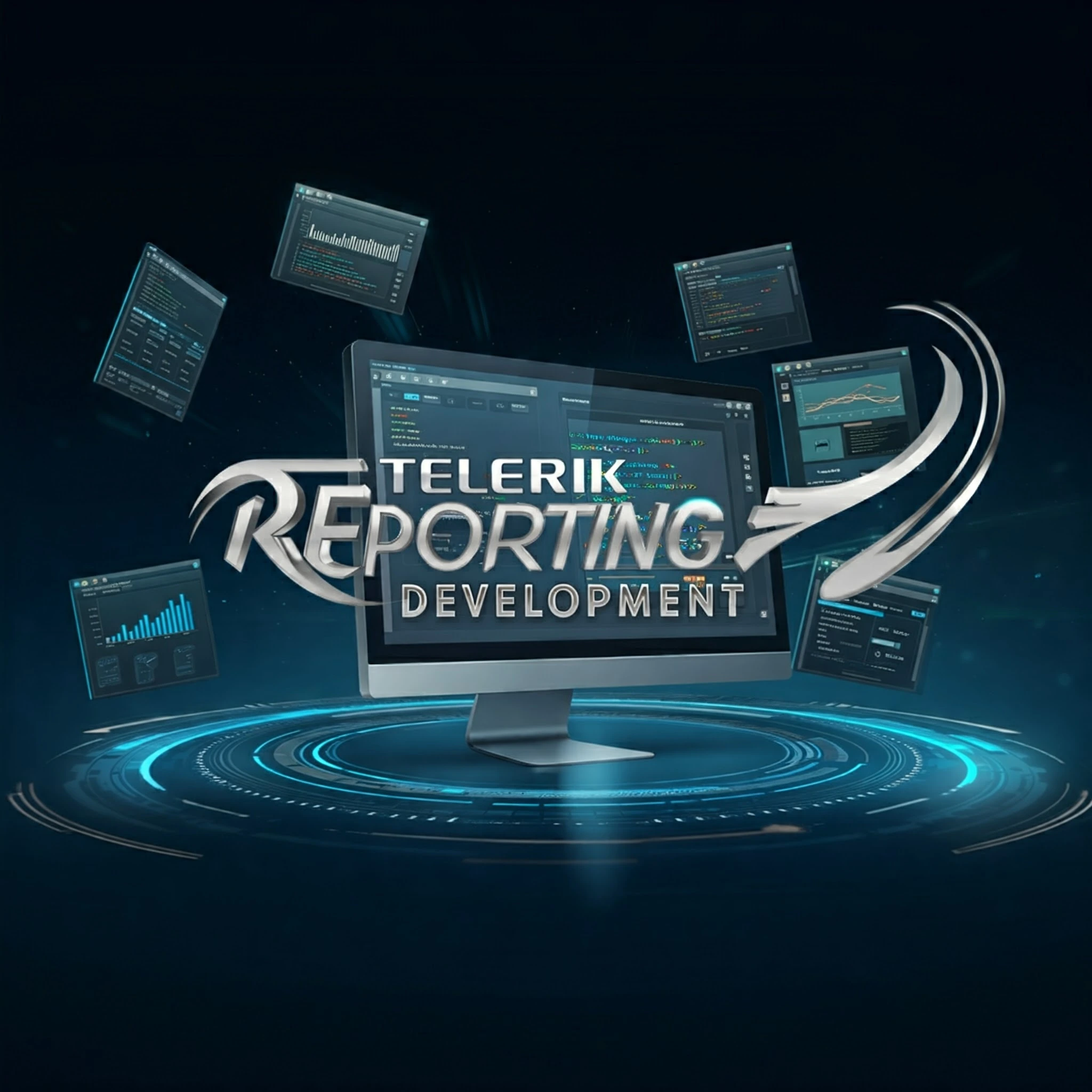Telerik is a comprehensive development platform that revolutionises how Australian businesses handle reporting and data visualisation. At its core, Telerik's purpose is to streamline the creation, management, and distribution of professional reports while reducing development time and costs.
Key purposes include:
➡️ Automating complex reporting processes
➡️ Delivering interactive data visualisations
➡️ Enabling real-time business intelligence
➡️ Supporting informed decision-making
➡️ Enhancing data presentation capabilities
What are the export options for Telerik Reporting?
Telerik Reporting offers extensive export capabilities to meet diverse business requirements. The platform supports:
➡️ PDF (perfect for professional documentation)
➡️ Excel (XLSX, CSV for data analysis)
➡️ Word (DOCX for editable reports)
➡️ PowerPoint (PPTX for presentations)
➡️ HTML (web-ready formats)
➡️ Image formats (PNG, JPEG)
➡️ XML and JSON (for system integration)
What format does Telerik render reports?
Telerik Reporting utilises multiple rendering formats to ensure optimal viewing across different platforms:
➡️ HTML5 for web-based viewing
➡️ XAML for WPF applications
➡️ Windows Forms for desktop applications
➡️ PDF for print-ready documents
➡️ Native mobile formats for iOS and Android
What is the difference between Telerik and SSRS?
While both Telerik Reporting and SQL Server Reporting Services (SSRS) are powerful reporting tools, they serve different needs:
Telerik Reporting:
➡️ More modern, flexible architecture
➡️ Superior cross-platform compatibility
➡️ Enhanced mobile support
➡️ More intuitive design interface
➡️ Better integration with modern frameworks
SSRS:
➡️ Traditional Microsoft-centric approach
➡️ Limited to Windows environments
➡️ More rigid deployment options
➡️ Steeper learning curve
What are the pros and cons of Telerik Reporting?
Pros:
➡️ Comprehensive feature set
➡️ Modern, responsive design
➡️ Excellent cross-platform support
➡️ Rich visualisation options
➡️ Strong developer community
➡️ Regular updates and improvements
Cons:
➡️ Initial learning curve for new developers
➡️ Premium pricing structure
➡️ Requires technical expertise for advanced features
➡️ Some features need additional licensing
How do you bind data to Telerik report?
Data binding in Telerik Reporting is straightforward and flexible:
1. Configure data source components
2. Define connection strings
3. Write SQL queries or stored procedures
4. Use the Report Designer to map fields
5. Apply formatting and grouping
How do I add DataSource to Telerik Reporting?
Adding a DataSource involves several steps:
1. Right-click the Report Explorer
2. Select 'Add Data Source'
3. Choose source type:
➡️ SQL Database
➡️ Object Data Source
➡️ Entity Framework
➡️Web Service
4. Configure connection settings
5. Test the connection
6. Save and implement
How to group data in Telerik Reporting?
Data grouping in Telerik Reports can be accomplished through:
1. Using the Group Editor
2. Implementing group expressions
3. Setting up group hierarchies
4. Configuring group properties
5. Adding group headers/footers
How do I create a new Telerik report?
Creating a new Telerik report involves:
1. Opening Visual Studio
2. Selecting 'New Project'
3. Choosing 'Telerik Report'
4. Selecting report type
5. Configuring initial settings
6. Adding data sources
7. Designing the layout
How do I open a Telerik report in Visual Studio?
Opening a Telerik report in Visual Studio:
1. Launch Visual Studio
2. Open your project
3. Navigate to the Reports folder
4. Double-click the .TRDX file
5. Use the Report Designer interface
How to create a Telerik report in .NET core?
Creating a Telerik report in .NET Core:
1. Install Telerik Reporting packages
2. Configure services in Startup.cs
3. Add necessary middleware
4. Create report definition
5. Implement viewer component
6. Configure routing and controllers
How do I add Telerik to my project?
Adding Telerik to your project:
1. Install NuGet packages
2. Add references to assemblies
3. Configure license key
4. Set up necessary components
5. Implement required services
How many people use Telerik?
Telerik boasts a global user base of over 1.7 million developers, with thousands of Australian businesses relying on their reporting solutions. The platform's popularity continues to grow, particularly in the enterprise sector.
What is Telerik Report Viewer?
Telerik Report Viewer is a powerful component that enables:
➡️ Interactive report viewing
➡️ Dynamic parameter selection
➡️ Export functionality
➡️ Print capabilities
➡️ Mobile-friendly interface
What is Telerik Reporting Server?
Telerik Reporting Server is an enterprise-grade solution offering:
➡️ Centralised report management
➡️ Scheduled report generation
➡️ User access control
➡️ Report cataloguing
➡️ API integration options
Why Choose C9 for Your Telerik Reporting Needs?

As Australia's leading Telerik development partner, C9 offers:
➡️ Extensive experience with enterprise reporting solutions
➡️ Local support and expertise
➡️ Customised implementation strategies
➡️ Ongoing maintenance and updates
➡️ Proven track record of success
Take Action Today
Don't let complex reporting requirements hold your business back. Partner with C9 for comprehensive Telerik Reporting solutions tailored to your needs.
Contact us for a free consultation:
➡️ Website: https://www.c9.com.au/Platforms-Technologies/Reporting-Business-Intelligence/Telerik-Reporting-Developers
Our team of certified Telerik experts is ready to help you harness the full potential of your data through sophisticated reporting solutions.
Transform your business intelligence capabilities with C9 - Australia's trusted Telerik development partner.
Related Telerik Development Articles
Stay up-to-date with our latest insights, tutorials, and best practices for Telerik development. Explore in-depth articles covering UI components, responsive design, data visualization, and performance optimisation techniques to enhance your Telerik-powered applications.
Unlock Data Insights: Choosing the Best Reporting Tool for Your Needs (Power BI vs. Telerik)